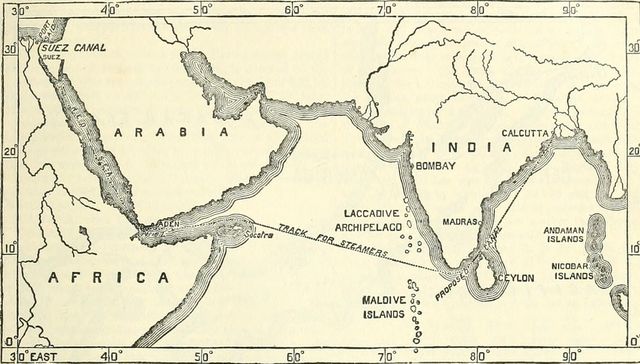3.2.1
Administration in India & Palestine
Administration in India, 1914-1947
Administration in India, 1914-1947
Managing policy during and between the two world wars was an incredibly difficult job. Britain was forced to balance defence demands with tensions at home and in her colonies.


The creation of a dyarchy in India
The creation of a dyarchy in India
- In 1919, the Government of India Act created a ‘dyarchy’.
- This means that two authorities shared rule and that a limited number of Indian people (7 million) could vote on provincial representatives for themselves.


The Simon Commission
The Simon Commission
- Between 1929 and 1930, the Simon Commission was set up.
- It was designed to review the 1919 Act and make recommendations.


Round Table Conferences
Round Table Conferences
- Between 1930 and 1931, India and Britain negotiated at the Round Table Conferences.


Expanding the franchise in India
Expanding the franchise in India
- The Government of India Act of 1935 was passed by Parliament in Britain.
- This act created the Reserve Bank of India (a separate Indian central bank).
- It ended dyarchy and gave provinces more autonomy from the British government in Westminster.
- Direct elections were introduced and the number of people with the franchise in India grew fivefold to 35 million.


Indian Independence
Indian Independence
- By the end of WW2, it was clear that negotiations were no longer possible and independence would be granted.
- "In 1939 the Empire was seething with unrest. India and Egypt were full of nationalist turmoil" (Kitchen, 1996).
- In 1940, Gandhi led Indians in a peaceful campaign of 'civil disobedience'. Although Gandhi supported the anti-Nazi war effort, India did not have its own democracy to defend against the Nazis. It was still under British rule.
Administration in Palestine 1914-1947
Administration in Palestine 1914-1947
Managing policy during and between the two world wars was an incredibly difficult job. Britain was forced to balance defence demands with tensions at home and in her colonies.


The importance of Palestine
The importance of Palestine
- In 1914, Palestine was just east of Egypt, next to the Suez Canal. It connected Egypt with the Middle East and Asia overland.
- The Suez Canal was one of the main reasons that Britain was interested in Egypt. Britain owned part of the Suez Canal and transporting goods through the Suez Canal meant that ships could sail from Britain to the Mediterranean to India through the Red Seas, without having to go around the whole of Africa.


Attempts to create a civil government in Palestine, 1920
Attempts to create a civil government in Palestine, 1920
- In 1920, High Commissioner Herbert Samuel tried to set up a civilian government in Palestine. However, there was discord between the British government in the UK (which was more supportive of the Jewish cause) and the British civil servants in Palestine (who were more supportive of the Arab cause).
- Between 1929 and 1931, tensions between Arabs and Jews rose in Palestine. There were recommendations that land purchases in Palestine were controlled.
- Hitler's persecution of the Jews led to even more Jewish migration to Palestine. In 1931, 17% of the population of Palestine had been Jewish. By 1946, it had risen to 30%.


Maintaining control in Palestine
Maintaining control in Palestine
- The Jewish population of Palestine rose from 150,000 in 1926 to 400,000 in 1936. The total population of Palestine was 1.2 million.
- In 1937, the Peel Report recommended a partition as a solution to disorder in the region. However, Palestine's mandate status and resistance from the Arab population of Palestine made this impossible.


Jewish immigration and rebellion
Jewish immigration and rebellion
- In 1939, Jewish immigration was limited to 15,000 a year for five years.
- A terrorist organisation, the Stern Gang, led by Itzhak Shamir, began attacking British government offices and assassinated Lord Moyne, the British Minister for the Middle East in an attempt to force Britain to create a national home for the Jewish people in Palestine.


UN control
UN control
- In 1947, the UN was given control of Palestine by the British government.
- The UN had been formed only 2 years prior to this.
- The UN sought to partition Palestine into two independent states, one Jewish and one Arab, with Jerusalem remaining under international control.
- The plan incited the first of many wars in Palestine, and ultimately the plan was not instated.
1High Water Mark of the British Empire, 1857-1914
1.1Development of Imperialism, 1857-1890
1.2Imperial & Colonial Policy, 1857-1890
1.3Trade & Commerce, 1857-1890
1.4Attitudes Towards the Empire, 1857-1890
1.5Relations with Indigenous Peoples, 1857-1890
2Imperial Consolidation & Liberal Rule, 1890-1914
2.1Consolidation & Expansion in Africa, 1890-1914
2.2Imperial & Colonial Policy, 1890-1914
2.3Trade & Commerce, 1890-1914
2.4Attitudes Towards the Empire, 1890-1914
2.5Relations with Indigenous Peoples, 1890-1914
3Imperialism Challenged, 1914-1967
3.1Expansion & Contraction of Empire, 1914-1947
3.2Colonial Policy & Administration, 1914-1947
3.3Trade, Commerce & Economic Impact of War
3.4Attitudes Towards the Empire, 1890-1914
3.5Relations with Indigenous Peoples, 1914-1947
4The Wind of Change, 1947-1967
4.1Decolonisation in Africa & Asia, 1947-1967
4.2Colonial Policy & Administration, 1947-1967
4.3Trade & Commerce, 1947-1967
4.4Attitudes Towards the Empire, 1947-1967
4.5Post-Colonial Ties, 1947-1967
4.6Relations with Indigenous Peoples, 1947-1967
Jump to other topics
1High Water Mark of the British Empire, 1857-1914
1.1Development of Imperialism, 1857-1890
1.2Imperial & Colonial Policy, 1857-1890
1.3Trade & Commerce, 1857-1890
1.4Attitudes Towards the Empire, 1857-1890
1.5Relations with Indigenous Peoples, 1857-1890
2Imperial Consolidation & Liberal Rule, 1890-1914
2.1Consolidation & Expansion in Africa, 1890-1914
2.2Imperial & Colonial Policy, 1890-1914
2.3Trade & Commerce, 1890-1914
2.4Attitudes Towards the Empire, 1890-1914
2.5Relations with Indigenous Peoples, 1890-1914
3Imperialism Challenged, 1914-1967
3.1Expansion & Contraction of Empire, 1914-1947
3.2Colonial Policy & Administration, 1914-1947
3.3Trade, Commerce & Economic Impact of War
3.4Attitudes Towards the Empire, 1890-1914
3.5Relations with Indigenous Peoples, 1914-1947
4The Wind of Change, 1947-1967
4.1Decolonisation in Africa & Asia, 1947-1967
4.2Colonial Policy & Administration, 1947-1967
4.3Trade & Commerce, 1947-1967
4.4Attitudes Towards the Empire, 1947-1967
4.5Post-Colonial Ties, 1947-1967
4.6Relations with Indigenous Peoples, 1947-1967
Unlock your full potential with Seneca Premium
Unlimited access to 10,000+ open-ended exam questions
Mini-mock exams based on your study history
Unlock 800+ premium courses & e-books